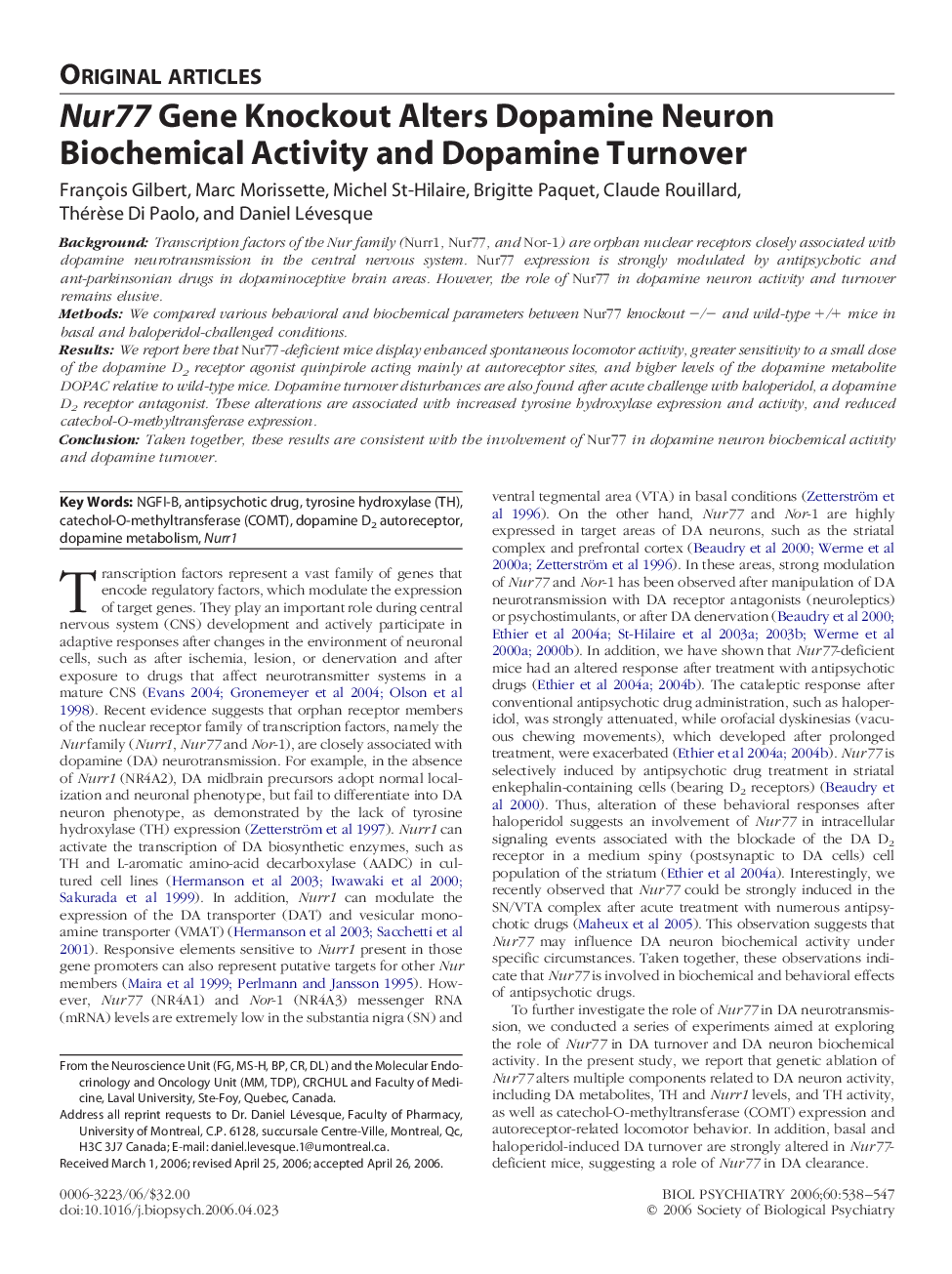| کد مقاله | کد نشریه | سال انتشار | مقاله انگلیسی | نسخه تمام متن |
|---|---|---|---|---|
| 4179972 | 1276578 | 2006 | 10 صفحه PDF | دانلود رایگان |

BackgroundTranscription factors of the Nur family (Nurr1, Nur77, and Nor-1) are orphan nuclear receptors closely associated with dopamine neurotransmission in the central nervous system. Nur77 expression is strongly modulated by antipsychotic and ant-parkinsonian drugs in dopaminoceptive brain areas. However, the role of Nur77 in dopamine neuron activity and turnover remains elusive.MethodsWe compared various behavioral and biochemical parameters between Nur77 knockout −/− and wild-type +/+ mice in basal and haloperidol-challenged conditions.ResultsWe report here that Nur77-deficient mice display enhanced spontaneous locomotor activity, greater sensitivity to a small dose of the dopamine D2 receptor agonist quinpirole acting mainly at autoreceptor sites, and higher levels of the dopamine metabolite DOPAC relative to wild-type mice. Dopamine turnover disturbances are also found after acute challenge with haloperidol, a dopamine D2 receptor antagonist. These alterations are associated with increased tyrosine hydroxylase expression and activity, and reduced catechol-O-methyltransferase expression.ConclusionTaken together, these results are consistent with the involvement of Nur77 in dopamine neuron biochemical activity and dopamine turnover.
Journal: Biological Psychiatry - Volume 60, Issue 6, 15 September 2006, Pages 538–547